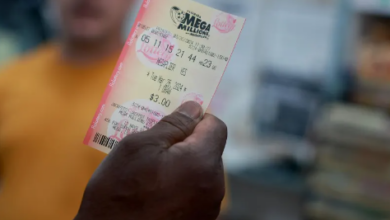How to Read and Understand a Credit Card Statement


Although it doesn’t make for the most interesting reading material, your credit card statement is something you’ll want to get in the habit of checking on a monthly basis.
Why? Because credit card statements are the fastest way to get all the essential details about your upcoming credit card bill.
They provide details on your card balance, minimum payment, interest payments, and so much more. Credit card statements are also one of easiest ways to ensure you’re on track with your financial goals, and that you won’t have any bad surprises when your credit card payment is finally due at the end of your billing cycle.
So how can you go about checking your monthly statement without turning it into an hours-long process? Here’s everything you’ll need to know to efficiently browse your credit card statement each month.
What Is a Monthly Statement?
The monthly statement comes via mail or electronically and includes a breakdown of any new charges on your account (like any recent purchases you’ve made) as well as information on your outstanding balance, minimum payment and interest charges. Your monthly statement is one of the best ways to check and manage the activity on your credit card. Think of it like a prerequisite to your credit card bill that provides a big-picture summary of your credit card balance and payment schedule.
What’s in my Credit Card Statement?
Besides providing the big picture on your credit card account, a credit card statement will also show a few key items, like a list of any fees you’ve incurred in the last billing cycle (such as late payment fees or foreign transaction fees), as well as details on your previous balance and whatever payment you last made.
These statements will also help you track how much of your available credit line is left based on your current monthly balance. Since credit utilization is a key aspect of building your credit score, it’s something worth noting whenever you receive a monthly credit card statement.
Your credit card statement also shows your minimum required monthly payment as it relates to your overall balance. While it’s not required to pay your balance in full every month, you’ll save money on interest charges by doing so—since these only kick in when you have an outstanding balance on your card from the previous month.
If you get a minimum payment warning and you ignore it, your account could be closed for non-payment and/or turned over to a collection agency.
Glossary of Credit Card Statement Terms
Account Summary
Your account summary is pretty much what it sounds like—an overview of your credit card statement for that payment period (which is usually about a month long). It will include details about how much you’ve used your credit card during that time period as well as how much you owe. It may not include everything listed below (or may have these items listed in a different order), but it will generally have details on most of the following:
- Account number: This is your credit card number. You will need this number to identify yourself whenever contacting your bank or credit card issuer.
- Account activity: This section of your credit card statement will list all the transactions made during your current billing cycle, including the amount of your purchases and details on the merchant you purchased from. Some card issuers even assign a reference number to each purchase, making it easier to reference if you have questions later (like if you suspect you’ve been the victim of fraud or identity theft).
- Payments: This refers to any previous payments you made on your credit card balance. If you pay your card in full each month, then this number will match your “Previous Balance.”
- Credits: This is often grouped in with your payments, and refers to any credits (ie. deposits) made into your account. Credits happen if your credit card issuer owes you money or if you return an item and receive a refund back onto your credit card.
- Purchases: This number reflects the total dollar amount of any purchases you made during your current billing cycle.
- Balance transfers: If your credit card allows balance transfers, the total dollar amount for any balance transfers made during your current billing cycle will be shown here.
- Cash advances: This reflects the total dollar amount of any cash advance you withdrew from your account during the current billing cycle. Not all cards allow for this, so it may not appear on your statement.
- Fees: If you’ve been charged any fees (like late payment fees, foreign transaction fees, or even an annual fee) they will appear under this category as part of the total for your owed balance.
- Interest charges: Whenever you carry a balance on your credit card for more than one billing cycle, you will incur interest charges (you may even be responsible for paying something called residual interest). These charges vary quite a bit based on your credit score (those with higher credit scores tend to qualify for cards with lower interest rates, among other perks).
- New balance: This reflects your current owed balance for your account. Keep in mind this number may include your previous balance (if it was not paid in full) plus any new charges or fees you’ve incurred in your current billing cycle.
- Available credit: Your available credit is how much of your credit line is still available to you. For example, if you have a credit line of $5,000 and your current balance is $2,000, then you’d have an available credit of $3,000.
- Cash access line: For credit cards that allow cash advances, this will tell you how much you’re allowed to borrow.
- Opening/closing date: Here you’ll find the first and last day of your billing cycle listed. Purchases made before or after those dates will appear on your previous (or forthcoming) credit card statements.
- Days in billing cycle: This tells you exactly how long your billing cycle lasts, which is usually around 30 days.
Payment Information
This part of your credit card statement will provide details on how much you owe during that billing cycle. Here are a few of the key terms you’ll likely see:
- Current statement balance: Although it’s also listed elsewhere on your statement, card issuers tend to list it at least twice to make sure you see it. This number is synonymous with your “New Balance” and reflects how much you currently owe on your account, and includes any previously unpaid balance, plus any new purchases, interest charges or fees from your current billing cycle.
- Minimum payment due: This is the minimum dollar amount you’ll need to pay by the listed due date to avoid paying a late fee. Minimum payments are calculated differently depending on your card issuer’s policies as well as your current balance and interest rates. Most banks generally charge either a flat rate (like $25) for balances under $1,000, or a percentage (usually around 2%) for balances over $1,000. Some banks will also calculate your minimum payment by adding up whatever interest charges you owe plus 1% of your current balance. It’s generally advised to pay more than your minimum balance to avoid getting in over your head with credit card debt.
- Minimum payment warning: This section of your statement includes a table that shows you how long it would take you to pay off your balance (usually several years) if you continued to only make minimum payments (and not put any new charges on your card).
- Late payment warnings: This warning reflects the maximum dollar amount you may be charged if you fail to pay your credit card bill on time. Although banks typically won’t charge this full amount for first time offenders, they very well may do so for subsequent late payments.
Rewards Summary
If your card has a rewards program, you’ll find all the details about your rewards balance in this section of your credit card statement.
- Previous rewards balance: This reflects your rewards balance prior to your current billing cycle.
- Rewards earned this month: This number tells you how many rewards you’ve earned during your current billing cycle.
- Bonus rewards: If your card is offering bonus rewards in certain categories, and you’ve recently qualified for these bonus rewards, they will be listed here.
- Total rewards available: This reflects how many rewards are available to use right now. Since some banks take longer than others to process rewards, this number might not include all of the rewards you’ve earned in the current billing cycle.
Frequently Asked Questions (FAQs) About Credit Card Statements
How Do You Read Credit Card Statements?
If it’s your first time reading a credit card statement, you’ll want to focus on two things: Your account summary and payment information. These two sections of your statement will show you your current balance, the minimum required payment, and more specific details about your account activity.
What Does a Credit Card Statement Show?
A credit card statement is a summary that contains everything you need to know about the financial standing of your credit card. It shows your balance, when payment is due and the minimum payment required, available credit line, interest charges, fees, and even a list of your recent transactions. It will also have the contact information for the company if you have questions. Keep in mind that purchases made after the closing date of the billing cycle will not be on the statement, which means you may owe more than.
What Happens if I Pay Less Than the Minimum?
Paying less than the minimum required payment listed on your credit card statement will usually result in some kind of fee. You should consult your credit card agreement for details on fees, and also try to pay above minimum payments whenever possible—as missing payments or only making minimum payments can quickly lead to credit card debt.
What Happens if I Pay My Bill Late?
Paying your credit card bill late will likely result in a fee and may even cause your interest rate to increase. Some lenders apply a penalty APR to your account if it’s been 60 or more days without payment. If you miss paying the bill for this amount of time, the account could be closed or sent to a collection agency.
Contributor Larissa Runkle frequently writes on finance, real estate, and lifestyle topics for The Penny Hoarder.
Source link





